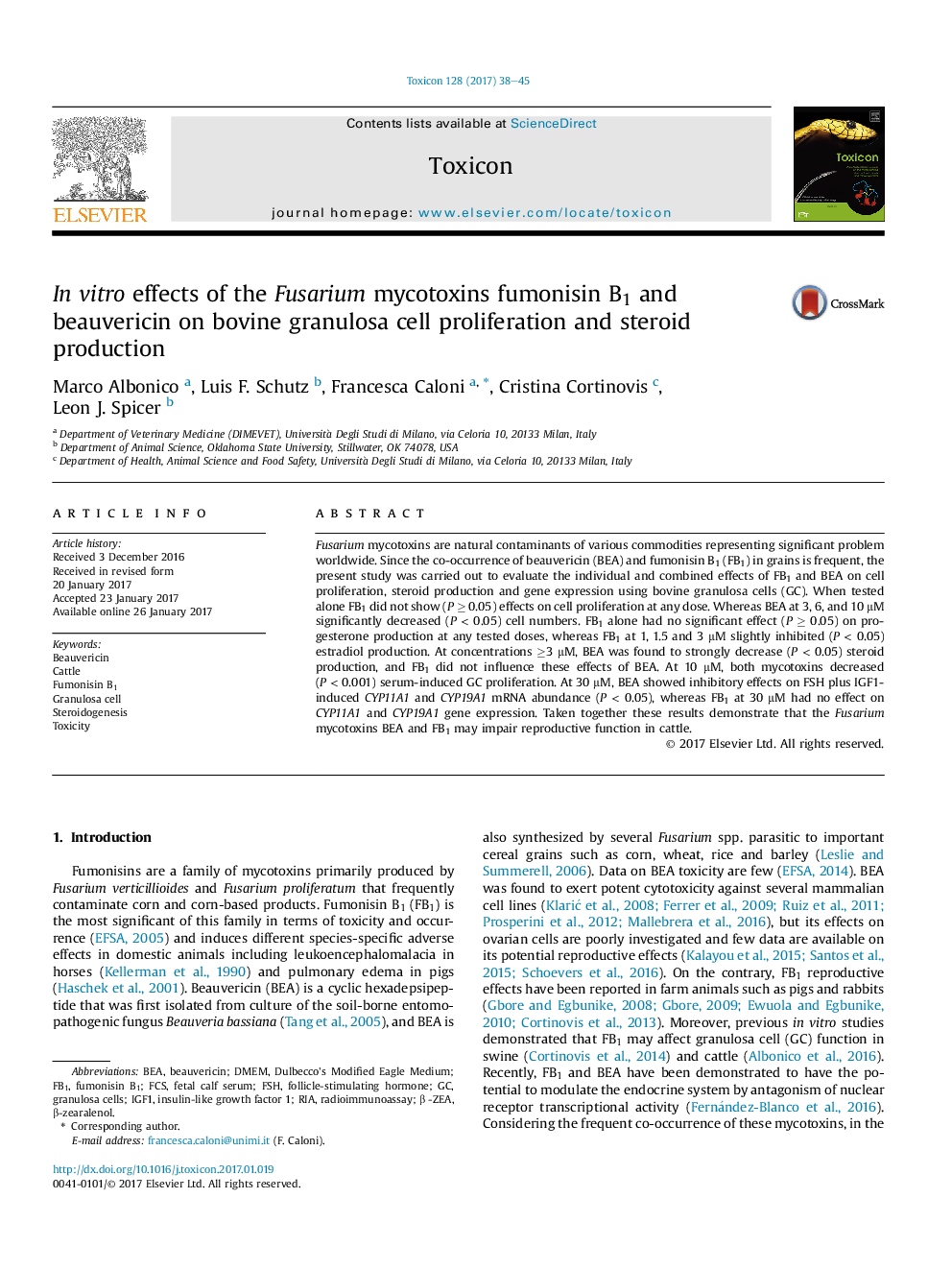| Article ID | Journal | Published Year | Pages | File Type |
|---|---|---|---|---|
| 5519459 | Toxicon | 2017 | 8 Pages |
â¢Granulosa cells were obtained from bovine ovaries collected at local slaughterhouse.â¢Beauvericin (BEA) drastically decreased bovine granulosa cell number and steroid production.â¢Fumonisin B1 (FB1) slightly inhibited estradiol production.â¢FB1 did not influence the effects of BEA.
Fusarium mycotoxins are natural contaminants of various commodities representing significant problem worldwide. Since the co-occurrence of beauvericin (BEA) and fumonisin B1 (FB1) in grains is frequent, the present study was carried out to evaluate the individual and combined effects of FB1 and BEA on cell proliferation, steroid production and gene expression using bovine granulosa cells (GC). When tested alone FB1 did not show (P â¥Â 0.05) effects on cell proliferation at any dose. Whereas BEA at 3, 6, and 10 μM significantly decreased (P < 0.05) cell numbers. FB1 alone had no significant effect (P â¥Â 0.05) on progesterone production at any tested doses, whereas FB1 at 1, 1.5 and 3 μM slightly inhibited (P < 0.05) estradiol production. At concentrations â¥3 μM, BEA was found to strongly decrease (P < 0.05) steroid production, and FB1 did not influence these effects of BEA. At 10 μM, both mycotoxins decreased (P < 0.001) serum-induced GC proliferation. At 30 μM, BEA showed inhibitory effects on FSH plus IGF1-induced CYP11A1 and CYP19A1 mRNA abundance (P < 0.05), whereas FB1 at 30 μM had no effect on CYP11A1 and CYP19A1 gene expression. Taken together these results demonstrate that the Fusarium mycotoxins BEA and FB1 may impair reproductive function in cattle.
